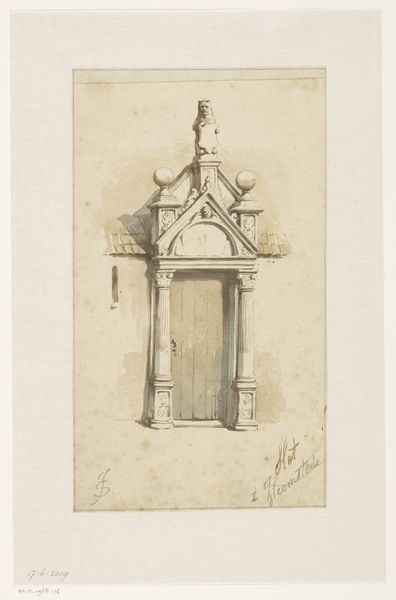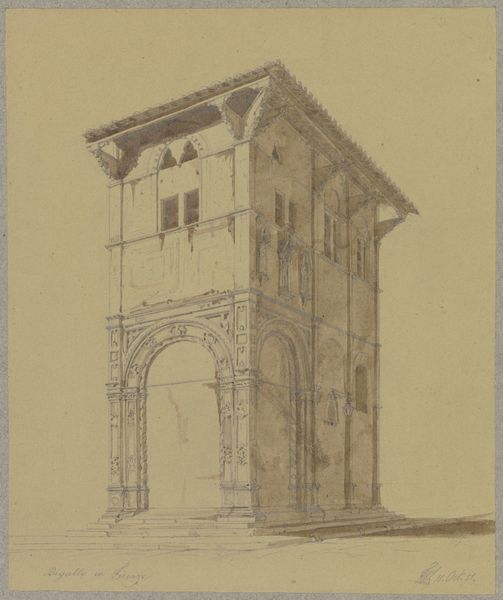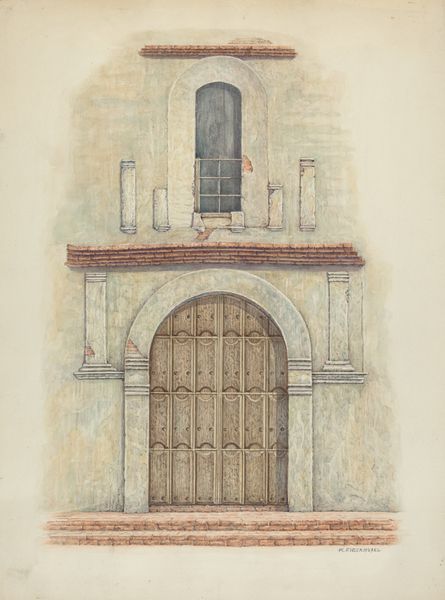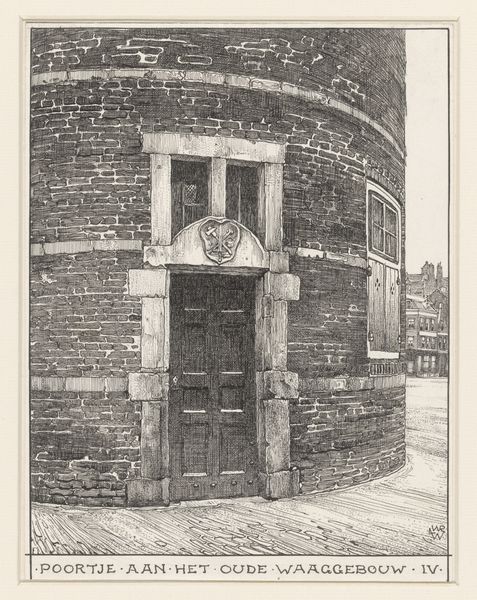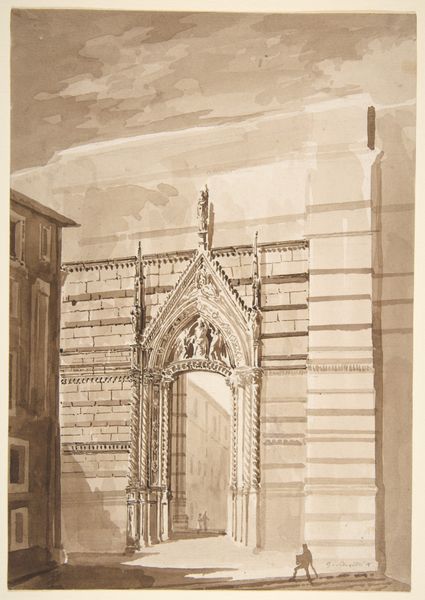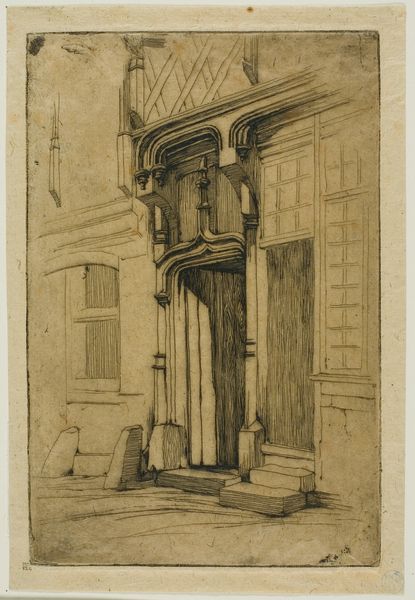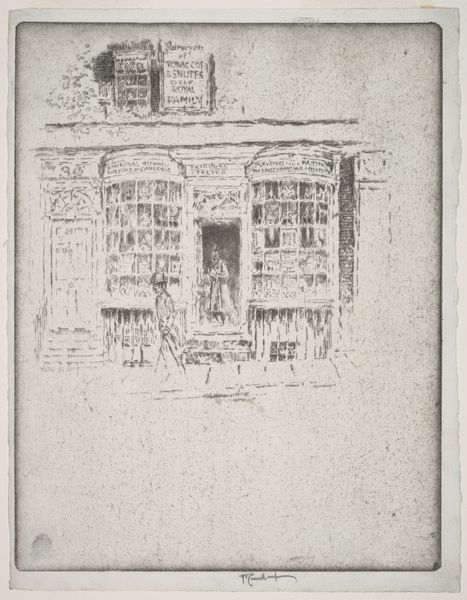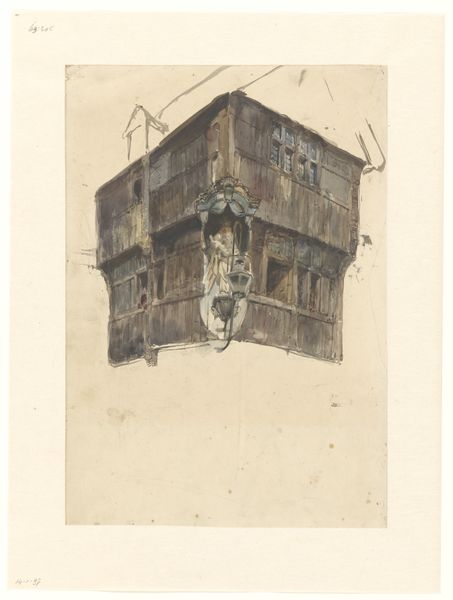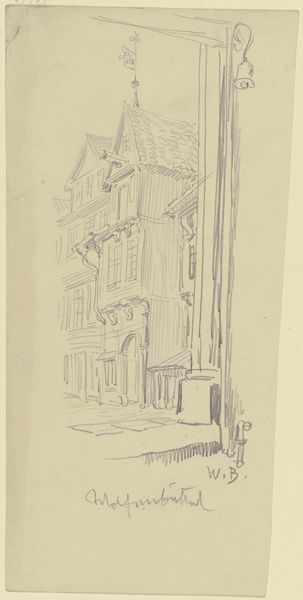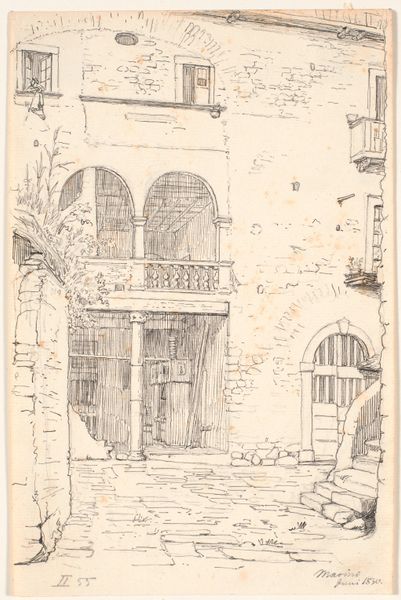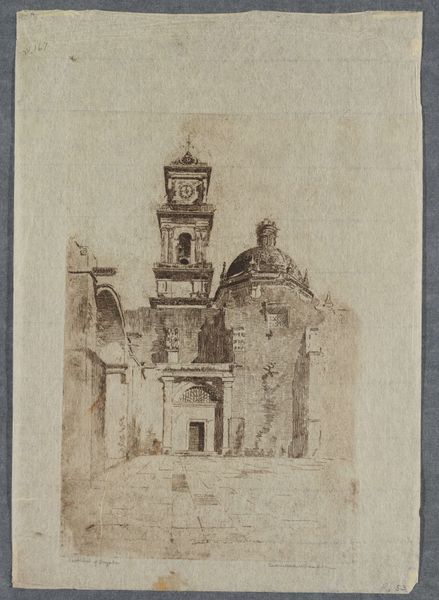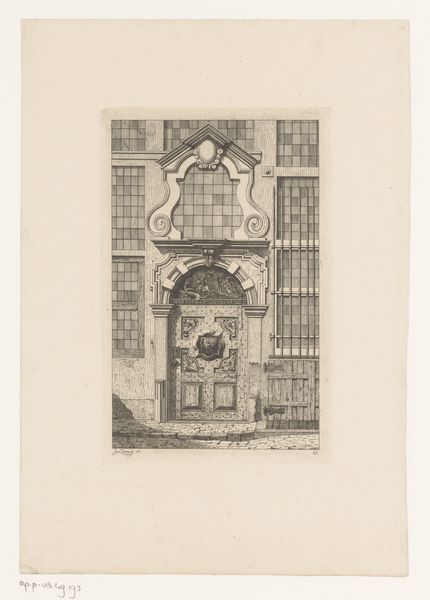
Dimensions: height 274 mm, width 205 mm
Copyright: Rijks Museum: Open Domain
Editor: Here we have Johan Adolph Rust’s watercolor and pencil drawing, “Poortje van het gilde in de St. Anthoniswaag, Amsterdam,” made sometime between 1838 and 1915. It’s a rather austere image, almost forlorn, focusing on this weathered doorway. What stands out to you when you look at it? Curator: This piece pulls us into a complex historical narrative. What appears as simple realism is, in fact, laden with commentary. The guild door, likely representing a space of male craft and commerce, stands almost as a relic. We see a hint of grandeur in the carving above the door but its present state tells a story of changing power dynamics. Editor: So, you see it as more than just a building portrait? Curator: Absolutely. Consider Amsterdam during this period, a city undergoing rapid modernization. Guilds, once centers of economic and social power, were slowly losing relevance. Rust's choice to depict this doorway, perhaps slightly crumbling, invites reflection on the shifting landscape of labor and social structures. What might that barrier in front of the building represent? Editor: It seems to emphasize restricted access or maybe decay, adding to the forlorn feeling I initially had. Like the Guild is now out of reach. Curator: Precisely! And think about who had access to these guilds. Were women included? What about different races? Rust, whether consciously or not, prompts us to question who is included and excluded from these spaces of power, even as they fade into history. The romantic style almost softens the edges but that doorway once kept people out. Editor: That’s a great point. It is beautiful, but it also feels a bit like a forgotten place with restricted access. Seeing the socio-political implications has definitely changed my perspective. Curator: Art can do that, invite you to look beyond the surface and engage with the narratives embedded within.
Comments
No comments
Be the first to comment and join the conversation on the ultimate creative platform.
